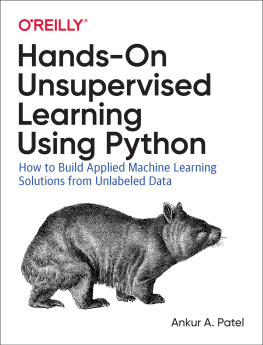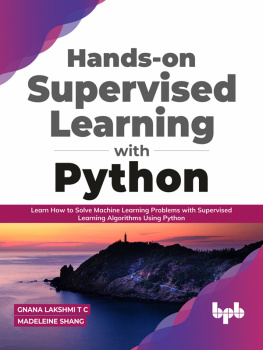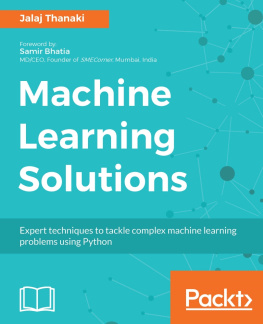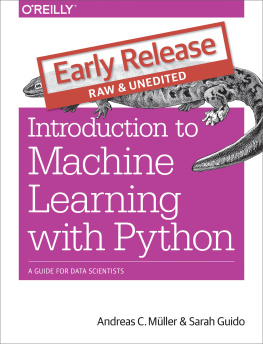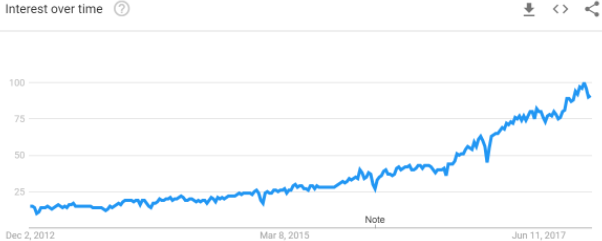Ankur A Patel - Hands-On Unsupervised Learning Using Python: How to Build Applied Machine Learning Solutions from Unlabeled Data
Here you can read online Ankur A Patel - Hands-On Unsupervised Learning Using Python: How to Build Applied Machine Learning Solutions from Unlabeled Data full text of the book (entire story) in english for free. Download pdf and epub, get meaning, cover and reviews about this ebook. year: 2019, publisher: O’Reilly Media, genre: Computer. Description of the work, (preface) as well as reviews are available. Best literature library LitArk.com created for fans of good reading and offers a wide selection of genres:
Romance novel
Science fiction
Adventure
Detective
Science
History
Home and family
Prose
Art
Politics
Computer
Non-fiction
Religion
Business
Children
Humor
Choose a favorite category and find really read worthwhile books. Enjoy immersion in the world of imagination, feel the emotions of the characters or learn something new for yourself, make an fascinating discovery.
- Book:Hands-On Unsupervised Learning Using Python: How to Build Applied Machine Learning Solutions from Unlabeled Data
- Author:
- Publisher:O’Reilly Media
- Genre:
- Year:2019
- Rating:4 / 5
- Favourites:Add to favourites
- Your mark:
Hands-On Unsupervised Learning Using Python: How to Build Applied Machine Learning Solutions from Unlabeled Data: summary, description and annotation
We offer to read an annotation, description, summary or preface (depends on what the author of the book "Hands-On Unsupervised Learning Using Python: How to Build Applied Machine Learning Solutions from Unlabeled Data" wrote himself). If you haven't found the necessary information about the book — write in the comments, we will try to find it.
Author Ankur Patel shows you how to apply unsupervised learning using two simple, production-ready Python frameworks: Scikit-learn and TensorFlow using Keras. With code and hands-on examples, data scientists will identify difficult-to-find patterns in data and gain deeper business insight, detect anomalies, perform automatic feature engineering and selection, and generate synthetic datasets. All you need is programming and some machine learning experience to get started.
Compare the strengths and weaknesses of the different machine learning approaches: supervised, unsupervised, and reinforcement learning
Set up and manage machine learning projects end-to-end
Build an anomaly detection system to catch credit card fraud
Clusters users into distinct and homogeneous groups
Perform semisupervised learning
Develop movie recommender systems using restricted Boltzmann machines
Generate synthetic images using generative adversarial networks
Ankur A Patel: author's other books
Who wrote Hands-On Unsupervised Learning Using Python: How to Build Applied Machine Learning Solutions from Unlabeled Data? Find out the surname, the name of the author of the book and a list of all author's works by series.

